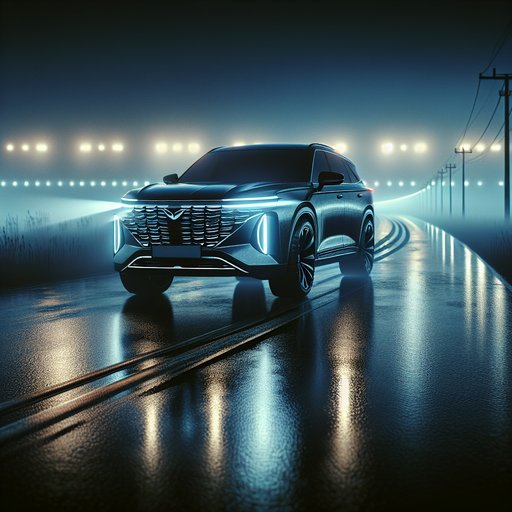
We spent two nights evaluating the 2024 Lexus RX 500h F SPORT Performance’s lighting package—triple-beam LEDs with BladeScan Adaptive High-beam System—on rural two-lanes and a closed airstrip. Here’s how its low/high beams, cutoff, cornering illumination, auto high-beam logic, and glare management perform in the real world.
Our test car was equipped with Lexus’s Triple-Beam LED units, auto-leveling, steering-linked adaptive lighting, static cornering lamps, and BladeScan Adaptive High-beam System (AHS). Color temperature measured approximately 5,500K, and the low-beam projectors showed a defined step to the right for sign illumination. Tires were at doorjamb pressures, vehicle loaded with two occupants and 150 lb of cargo to check leveling performance. Conditions: 38–44°F, clear and dry for baseline runs, followed by light drizzle.
We used a calibrated lux meter, a laser rangefinder, and a 25-foot wall aim check before road testing. Performance was assessed on an unlit two-lane with reflective posts at 50 m intervals and on a straight, flat taxiway for maximum reach measurements. Low beam: Usable reach to the 3-lux threshold averaged 115–130 m (varied with pavement reflectance), with a wide, even spread that cleanly covered the lane and shoulder without excessive foreground “pooling.” The cutoff is crisp, with a gentle upsweep to the right aiding sign visibility. Lateral illumination was strong out to the fog line and beyond—useful for spotting deer—and color rendition of roadside objects was excellent.
Aim remained stable under load thanks to auto-leveling; no perceptible “seesaw” over undulations. In drizzle, backscatter was well controlled due to restrained foreground intensity. High beam: Peak reach to the 1-lux threshold extended to roughly 250–270 m on the airstrip, with a bright, centered hotspot and good vertical fill above the cutoff. Transition from low to high is immediate and silent.
Reflective signage lights up early without washing out the near field. In rain, the beam remains usable with predictable backscatter; we noted only a slight halo around droplets, typical for LEDs at this color temperature. Cornering and AHS behavior: The steering-linked function smoothly swivels the low beams several degrees into the turn, aided by static cornering LEDs below ~25 mph or when signaling. On tight residential corners, this filled in apex shadows effectively.
BladeScan AHS kept high beams active while carving out precise shadows around oncoming and leading vehicles; masking occurred within ~300–500 ms of detection and tracked accurately through gentle curves. False positives were rare, though highly retroreflective overhead signs occasionally triggered brief additional dimming. Cyclist detection at the right edge worked reliably at 35–45 mph. Glare and etiquette: Pass-by checks with a second vehicle showed minimal glare—no flashes from oncoming drivers in 30+ encounters.
The beam cutoff stayed below eye level on level roads, and auto-leveling prevented lift with cargo aboard. In mirrors, following-car glare was modest, thanks to controlled vertical spread. Overall, this is a class-leading setup: excellent reach, a clean cutoff, smart cornering light execution, and among the best auto high-beam logic available. Recommendation: keep the factory aim, use the “standard” AHS sensitivity, and consider a hydrophobic windshield treatment to maximize camera performance in rain.












